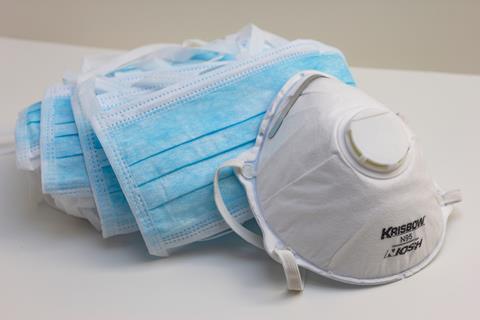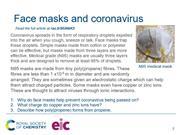Find out how medical grade (N95) masks are designed to remove at least 95% of droplets
Download this
Use the starter slide with your class: rsc.li/

When you talk, cough or sneeze, you can spread the coronavirus to others in the form of respiratory droplets expelled into the air. Face masks trap these droplets. Simple masks made from cotton or polyester can be effective, although masks made from three layers are more effective.
Medical grade (N95) masks are designed to remove at least 95% of droplets. These are commonly three layers thick and are made mostly from tiny poly(propene) fibres. These fibres are less than a 1 x10-6 m in diameter and are randomly arranged. The fibres are formed by extruding poly(propene) through a die with many small nozzles. These are then blown by hot air on to a conveyor where they stick together as they cool. Sometimes the poly(propene) fibres are given an electrostatic charge which can help them attract charged particles in the air. Some masks even have copper or zinc ions added to a layer. The copper and zinc ions are thought to attract viruses through ionic interactions.
Read about the current research into face coverings on Chemistry World.
Put this in context
Add context and highlight diverse careers with our short career videos showing how chemistry is making a difference and let your learners be inspired by chemists like Tyler, a university laboratory technician apprentice.
Downloads
Face masks and coronavirus starter slide
Presentation | PowerPoint, Size 0.17 mbFace masks and coronavirus starter slide
Presentation | PDF, Size 56.72 kb




No comments yet